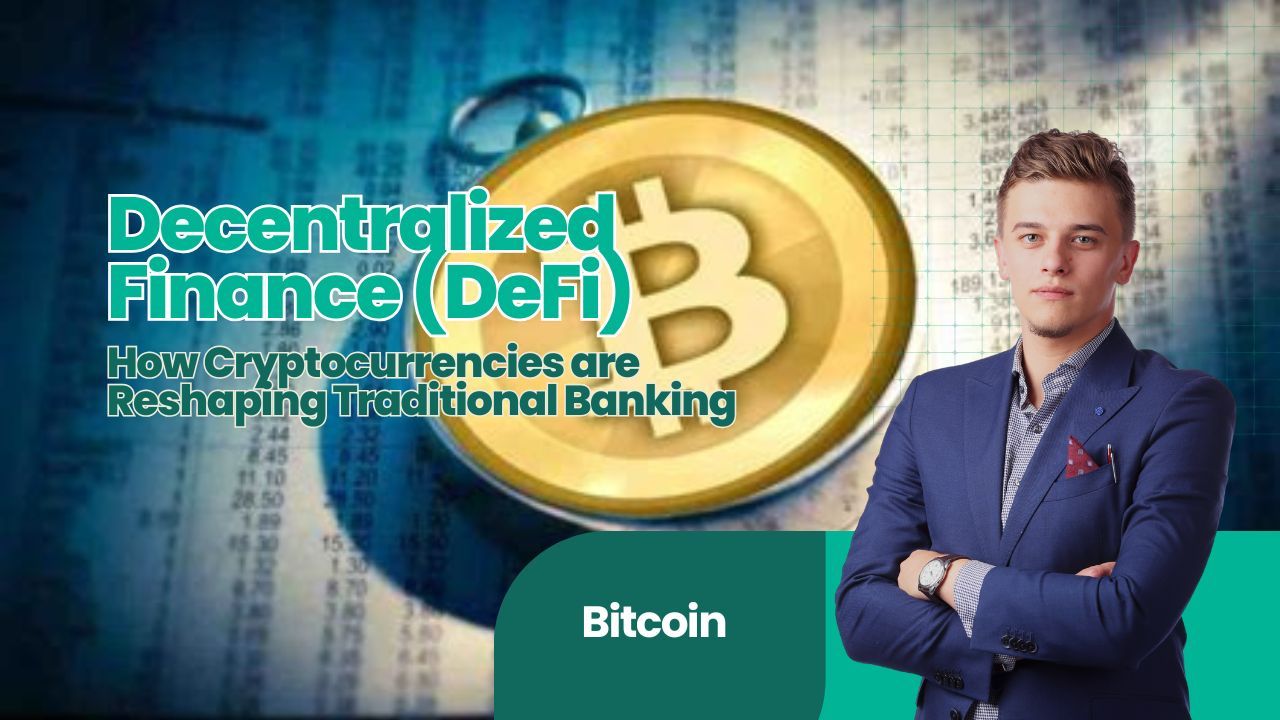The Rise of Decentralized Finance (DeFi): How Cryptocurrencies are Reshaping Traditional Banking

Futureincomes.site Hi In This Opinion I will review the latest trends about Crypto. Informative Notes About Crypto The Rise of Decentralized Finance DeFi How Cryptocurrencies are Reshaping Traditional Banking Don't stop in the middle of the road
"Consider a world in which it is possible to become one’s own bank, transact in different assets any time of the day and night, and even receive return on interest that is beyond the reach of commonly known banking institutions. And no, this is not a scene depicted in a sci fi film. This is the new reality with Decentralized Finance (DeFi) which is probably the most disruptive force to the traditional banking system in a century.
From the blackened room of 2009 where Satoshi Nakamoto introduced Bitcoin, who would have ever thought that this single revolutionary act of introducing digital currency would herald a new age that would up-end modern day banking systems So the world is moving to two central possibilities: Yes, that is what we are witnessing today: The drastic expansion of almost 1000% of assets and value in DeFi grows, protocols went from 800 million dollars in total value locked in the early days to over one hundred billion dollars . And no! It is not about mere numbers. It is about bringing finance to every person with an access to internet!
The Pillars of DeFi: An Inside Look at the Ecosystem
To begin with, at the foundations of DeFi rests blockchain technology, more specifically Ethereum, with smart contracts that function as digital forms of conventional finance contracts. These contracts that execute themselves reduce the reliance on middlemen and their associated expenses. Other than ‘scanning’ for transactions, blockchain explorers allow the users to check the progress and completion of the interactions with smart contracts instantly, providing an unrivalled level of transparency.
The ecosystem has shifted and matured into an industry which provides services analogous to traditional finance:
| Traditional Finance | DeFi Equivalent | Key Advantages |
|---|---|---|
| Banks | Lending Protocols | 24/7 availability, higher yields |
| Stock Exchanges | Decentralized Exchanges (DEX) | No intermediaries, lower fees |
| Investment Funds | Yield Farming Protocols | Automated strategies, higher returns |
Yield Farming: The New Move in Investment
Yield farming crypto has regarded itself as one of the most promising evolutions in DeFi. It is a strategy that involves moving digital assets from one protocol to the other in a bid to achieve higher returns. Farmers can earn upto several hundreds of APYs by rendering liquidity to several pools thereby earning several tokens at a time.
Look at this: DeFi yield farming techniques can even produce over 100% APY. This is in comparison to regular savings accounts which only earn 0.5% annually. Those higher returns on investment also have their downside which includes risks of smart contracts being attacked and the volatility of a token’s worth.
Liquidity: The Heart of DeFi Trading
A liquidity pool is basically a digital trading space where users deposit token pairs to enable decentralized exchanges. These pools have changed the way market makers operate, allowing anyone with liquidity tokens to participate in the market and earn through fees charged on transactions. The innovation is that the AMM model: the automatic market maker, uses mathematical formulas to set the price of various crypto assets.
For example, by providing assets in a liquidity pool, you will receive LP tokens proportional to the value provided. These tokens can often be staked in other protocols, allowing borrowers to create even more yield, in a practice known as “composability”: the attempt to chain together several decentralized finance (DeFi) protocols like a Lego brick.
Smart Contracts: The Work Done on Earth
The efficiency of DeFi systems lies in smart contracts, which are self-executing contracts whose specific conditions are embedded in the code. However, this means that there is an automatism in these contracts, which demands the fulfillment of predetermined conditions, for some action to be exercised.
Nevertheless, there are plus and minus to the fact that smart contracts can’t be changed. At the same time, they guarantee truthful performances, any errors in the code may become a source of great loss. For this reason, smart contract audit companies and insurance protocols on the DeFi network have grown in popularity.
The Future of Banking: DeFi's Impact on Traditional Finance
As the DeFi gains traction, the traditional financial sector is looking on. Major banks are starting to delve into the intersection of services and DeFi, arguing that it is better to embrace the innovation than to be pushed out of the market. Some have started introducing cryptocurrency custody to institutional clients and looking for yield farming opportunities.
The interaction of DeFi and Western Finance is birthing a new phenomenon whereby centralized decentralized finance is strife forth. This hybrid model seeks to harness the benefits of both worlds: the advancement and speed that DeFi services offer combined with the associated safety and regulatory compliance offered through traditional banking systems.
Managing the Risks and Challenges
With a bright side there exists a dark side; not all is glitter with DeFi. A number of smart contracts have been exploited causing massive hacks and also there lacks regulatory clarity. In addition, the level of sophistication posited by DeFi protocols may be regarded by some as an impediment to their widespread adoption.
Some of the key setbacks are such as:
- Negligible security barriers from smart contract exploits
- Weak regulations and compliance to overhaul normative structures
- Escalated gas prices during peak periods of usage.
- Intricate UIs and technological headwinds
- Market instability and loss volatility
Conclusion: The Beginning of the End of Finance as We Know It
To us, DeFi is not the latest trend but a progressive way of changing the global financial infrastructure. However, as the ecology develops and development factors that hinder growth are addressed, it is reasonable to assume that there will be a greater number of both retail and institutional investors.
Financial services are taking shape in terms of code which is executed by smart contracts and is viewed on blockchain explorers. DeFi presents an opportunity for yield farmers and all those who are interested in innovative financial systems to look forward a more effective, integrated, and user-friendly future. The history of the global finance system has entered the age of money: the era of decentralized finance and with that comes a revolution.
That is the complete summary of the rise of decentralized finance defi how cryptocurrencies are reshaping traditional banking that I have presented through crypto Happy exploring more information about this theme always learn from experience and pay attention to reproductive health. Don't forget to share this with your friends. hopefully other articles are also useful. See you.

